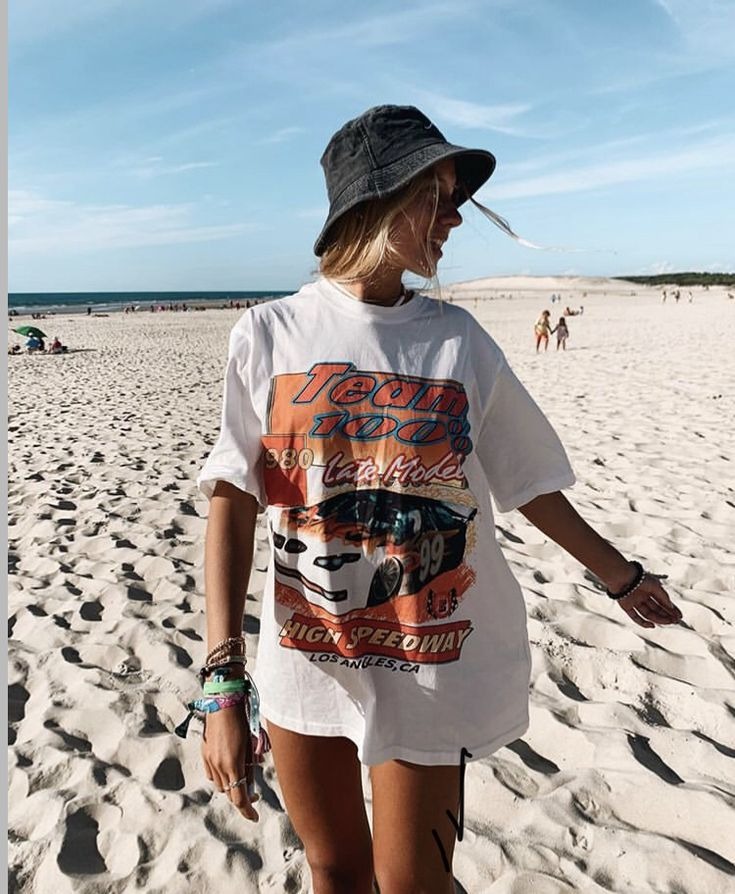Introduction
Few garments have enjoyed the longevity and cultural ubiquity of the humble t-shirt. What began as a simple pull-over undergarment has evolved into a global symbol of self-expression social commentary and technological progress. Over more than a century the t-shirt has journeyed from industrial workshops to battlefields from advertising billboards to high-fashion runways. In this extended exploration we will trace its earliest antecedents and wartime adoption, chart its rise as a blank canvas for art and activism, survey its cultural resonance around the world, and delve into the technical, economic and ethical dimensions that will shape its future.
Origins and Early Developments
The story of the t-shirt begins in the late nineteenth century when laborers in factories and mines sought relief from rigid starched uniforms ill-suited to sweltering conditions. Tailors experimented with soft knitted cotton fabrics to create pull-over shirts without collars or cuffs. These rudimentary prototypes offered breathability and freedom of movement yet remained hidden beneath heavier outerwear. They were never intended as standalone garments but won rapid favor among workers who prized their comfort.
By the turn of the twentieth century technological advances in textile machinery enabled mass production of knitted fabrics. Cotton jersey became widely available in yards upon yards of cloth supplied to garment makers. Early garment workers refined patterns to include armholes and neck openings that reduced seam bulk. Though still largely confined to private use these shirts set the stage for a garment defined by its minimalism.
Wartime Adoption and Civilian Transition
The watershed moment arrived during the First World War when naval commanders introduced short-sleeved undershirts to sailors serving in tropical stations. The design’s lack of restrictive collars and heavy woolen layers offered practical advantages under the equatorial sun. Its pale shade reflected heat and the jersey knit dried quickly after washing, making it ideal for life at sea. Following the armistice returning sailors carried their prized undershirts back to civilian life, integrating them into everyday wardrobes and normalizing their visibility.
During the Second World War the t-shirt’s military legacy deepened as armed forces across theaters adopted the garment in various forms. Pilots and tank crews wore versions made from cotton blends designed to wick moisture during intense activity. On home fronts factories retooled to produce cotton and rayon jerseys as part of civilian rationing programs. With rationing lifted at war’s end surplus stocks entered the commercial market at affordable prices, further democratizing access to this once specialized piece.
Rise of Graphic Expression
In the early postwar decades the t-shirt began to shed its purely functional reputation and emerge as a medium for graphic design. Soda companies and local businesses recognized the appeal of inexpensive walking advertisements. Screen-printing workshops flourished in urban centers, turning blank shirts into brand placards. Soon political groups and advocacy organizations harnessed this mobile platform to broadcast messages about civil rights peace movements and environmental causes. The t-shirt’s flat surface proved ideal for bold typography and simple imagery capable of reaching thousands.
By the 1960s countercultural artists and musicians embraced hand-printed and tie-dyed variants as symbols of rebellion. University students trading custom-made shirts at rallies and festivals created a grassroots network of message carriers. Bands sold tour shirts bearing psychedelic art that doubled as memorabilia. Graphic designers experimented with linocut and silkscreen techniques to achieve multi-colored prints that blurred the lines between commercial product and fine art.
Cultural Resonance and Subcultural Adoption
As the t-shirt gained prominence it became a defining element of numerous subcultures. In surf towns vibrant prints evoked oceanic motifs and brand logos blended with indigenous art. Skateboarders adopted oversized cuts and dark motifs reflecting urban grit. Punk enthusiasts designed DIY shirts with torn necklines and spliced imagery that challenged mainstream motifs. Hip-hop artists elevated branded sports shirts and logo-driven designs into statements of street credibility. Each scene adapted the t-shirt’s blank canvas to express its own codes of style and affiliation.
Simultaneously high fashion turned to the t-shirt as a canvas for experimentation. Luxury houses offered limited-edition runs featuring stitched appliqués and artisanal embroidery. Runway shows juxtaposed delicate silken jerseys with tailored trousers. Collaborations between leading designers and streetwear labels elevated select graphic shirts to collectible status, with resale prices reaching into the thousands. No longer a simple mass-market commodity the t-shirt had acquired layers of cultural value.
Technical Innovations in Materials and Construction
Beneath the surface aesthetics the technical evolution of the t-shirt has been equally profound. Early jerseys were woven on circular knitting machines yielding tubular fabrics. Today seamless knitting technology creates single-piece torsos tailored to the wearer’s shape. Advances in fiber science have introduced pima and supima cottons prized for their long staple length and silky hand. Blends incorporating lyocell and bamboo viscose confer moisture management and antibacterial properties without sacrificing softness.
Digital printing techniques now enable full-bleed photographic reproductions and gradients that were once impossible. Water-based and low-impact inks reduce environmental burdens while offering a wide color gamut. Laser cutting and ultrasonic bonding have replaced certain sewing operations, minimizing thread waste and creating clean, abrasion-resistant edges. Biometric 3D body scanning coupled with automated pattern generation yields custom-fit garments on demand, heralding a shift from size-based production to personalized sizing.
Global Variations and Regional Styles
Though the t-shirt’s basic silhouette remains constant its regional interpretations reflect a tapestry of cultural aesthetics. In West Africa vibrant batik and wax-print fabrics are repurposed into t-shirt panels adorned with geometric motifs. In South Asia block-printing artisans layer safflower dyes and ethnographic symbols to tell ancestral stories. Japanese designers apply the concept of wabi-sabi through muted indigo hues, distressed finishes and asymmetrical stitching. Scandinavian minimalism manifests in pared-back palettes and organic linen-cotton blends. In each context the t-shirt acts as a cultural ambassador, merging global form with local tradition.
Economic Dimensions and Supply Chain Dynamics
The global market for t-shirts surpassed hundreds of billions of dollars in annual revenue, with production centered in low-cost manufacturing hubs. Factories equipped with high-speed knitting, cutting and sewing lines churn out millions of units weekly. Yet this scale often masks opaque labor practices and supply chain vulnerabilities. Brand conglomerates juggle inventories across dozens of distribution centers, leveraging just-in-time logistics but risking overstock or stockouts. Rising raw material costs and trade tensions have prompted diversification away from traditional Asia-Pacific sources toward near-shoring in Latin America and Eastern Europe.
Ethical and Environmental Imperatives
The t-shirt’s environmental footprint has drawn scrutiny as part of the broader critique of fast fashion. Conventional cotton cultivation consumes vast quantities of water and relies on synthetic pesticides. Textile dyeing and finishing operations generate chemical effluents that pollute waterways. In response industry leaders and grassroots activists champion organic farming, regenerative agriculture and closed-loop water systems. Certifications such as Fair Trade and Global Organic Textile Standard offer consumers assurances of responsible practices.
Innovations in circularity aim to reclaim post-consumer garments through mechanical and chemical recycling. Plant-based dyes and digital colorants reduce water and energy use. Some brands embrace take-back programs and garment rental to extend product lifespans. Yet the effectiveness of these solutions hinges on consumer participation and systemic shifts in production incentives. The t-shirt thus stands at the crossroads of ecological stewardship and economic feasibility.
Customization, Co-Creation and the Maker Movement
The rise of desktop garment printers and accessible screen-printing kits has empowered individuals to craft their own designs. Online platforms offer 3D mockups and augmented reality previews that enable buyers to tweak graphics, fonts and color placements in real time. Local maker spaces host workshops teaching discharge printing and heat transfer techniques. Community co-ops facilitate small-batch runs for activist campaigns and charity events. This democratization of production subverts mass manufacturing and reinforces the t-shirt’s identity as a vehicle for personal storytelling.
Psychological and Sociological Dimensions
Beyond its functional role the t-shirt carries deep psychological resonance. Studies in environmental psychology have shown that clothing choices shape perceptions of self and others. Wearing a shirt bearing a cause logo can bolster feelings of empowerment and group cohesion. Celebrities endorsing branded shirts influence fan identity and purchase behavior. In social movements matching shirts create a visual spectacle signaling unity to outside observers. The t-shirt’s proximity to the skin imbues it with a sense of authenticity that more formal attire cannot replicate.
The Digital and Virtual Frontier
As digital life expands, the t-shirt has migrated into virtual spaces. In gaming environments avatars don branded tees as part of character customization. Non-fungible tokens (NFTs) tied to limited-edition digital shirt designs offer new revenue streams for artists. Augmented reality filters allow users to “try on” virtual shirts and share images on social media. Virtual pop-up shops host exclusive drops accessible to global audiences. These developments blur the line between physical ownership and digital experience, expanding the t-shirt’s reach into the metaverse.
Emerging Technologies and the Shirt of Tomorrow
Looking ahead, sensor-embedded textiles may monitor vital signs, adjust thermal properties and change color in response to environmental cues. Conductive fibers could integrate haptic feedback or connectivity modules for smart device interaction. Blockchain-enabled provenance tracking will authenticate origin stories and ensure compliance with ethical standards. On-demand biotechnology may allow for lab-grown cotton analogs that bypass traditional agriculture. As additive manufacturing and robotics penetrate garment factories, hyper-local microfactories could produce shirts within communities, slashing transport emissions.
Challenges and Opportunities
Despite these innovations, the t-shirt faces enduring challenges. Balancing affordability with fair labor compensation remains complex. Scaling sustainable materials without compromising performance or price demands continued research. Consumer education is pivotal in shifting demand away from disposability toward quality and longevity. Brands must navigate evolving regulations on chemical use, waste management and carbon reporting. At the same time collaboration between designers, technologists, policymakers and activists presents opportunities to reimagine the t-shirt as a model of circular economy and social responsibility.
Conclusion
From its modest origins as a hidden underlayer to its ascension as a global cultural artifact, the t-shirt embodies the interplay between innovation, identity and ideology. Its simplicity has rendered it adaptable to endless reinterpretation by artisans, activists, scientists and corporations alike. As we stand at the cusp of a new chapter—where digital realms intersect with sustainable practices and personalized production—the t-shirt will no doubt continue to reflect and shape the values of our times. In every stitch and printed message we find not merely a garment but a living chronicle of human creativity, aspiration and solidarity.




Leave a comment